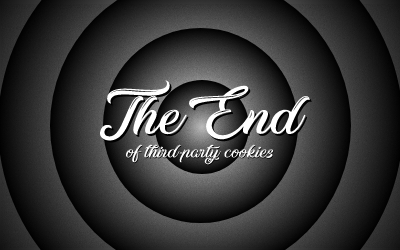Media Strategy
Sometimes, reading through the marketing trades can feel a little like playing Scrabble.
What can you do with the letters O-T-T or V-O-D? As new technology and industries create new media tactics, media teams are tasked with figuring out how these fit into marketing campaign strategies — and over-the-top (OTT) and video-on-demand (VOD) are just two of the latest game-changers to hit the scene.
In case these tactics sound more like alphabet soup than significant paid media players, here’s a quick primer: OTT includes video watched on smart TVs, Apple TV, Roku TV, etc., while VOD includes Netflix, Amazon Video, Hulu, etc.
Here are six things to keep in mind as you evaluate OTT and VOD and incorporate them into your media campaigns.
1. Broadcast isn’t dead, but its audience is aging.
The death of broadcast has been a topic of conversation for years, but it remains an important reach medium. According to eMarketer, about 39.3 million adults 18-plus are cord-free in 2019, yet with a projected 87.9 million households keeping their subscriptions, pay TV still has large reach and scale. Advertisers should be most concerned about broadcast’s declining reach with younger audiences: among adults 45-plus, 84% still subscribed to pay TV in 2018, yet only 70% of adults 18–44 subscribed (Leichtman Research Group).
2. The demographic of online streaming viewers is becoming more defined.
According to Pew Research (2017), younger audiences tend to use online streaming as their primary source of TV (61%). Not surprisingly, the same study found that online streaming as a primary source of TV viewing was more common among those with a college education (35% versus 22%). The financial savings, original content and flexibility associated with stopping pay TV services appeals to multigenerational users but especially resonates with millennials.
3. Cord-cutters, cord-shavers and cord-nevers are growing.
Today, an estimated 15.2% of the U.S. population are considered cord-cutters, but this is expected to grow. eMarketer projects that 20.8% of U.S. adults will cut the cord by 2022 (eMarketer, July 2018). Even among those who are not cord-cutters or cord-nevers, most millennials (71%) currently watch most of their TV content via streaming and OTT services, and this growing audience is incredibly valuable for our clients. Millennials, whose ages range from 22–37, are quickly becoming the homeowners many marketers seek.
4. Media buyers must continue to adapt the definition of “omnichannel.”
OTT and VOD platforms now complement pay TV subscriptions, and media schedules need to mirror the shift. These tactics have been welcomed into omnichannel approaches to campaign strategy and media planning. Here’s one technique Wray Ward has used for multiple clients (VELUX and LEVOLOR) when working with networks such as HGTV: diverting a portion of the linear television buy into OTT/VOD platforms. This is especially important when the contextual content or environment remains vitally important. It also keeps the advertising spend with the content provider, which allows for additional added-value opportunities.
5. Advertising in this space is here to stay.
While some VOD platforms, such as Netflix, do not offer advertising, a variety of OTT and VOD platforms welcome traditional ad units. This is partially due to audiences’ growing willingness to watch ad content in order to receive free access to content. According to Roku (2018), this trend is higher among millennials, who are 20% more likely than baby boomers to make this trade.
6. Marketers are better equipped to deliver the right ad, to the right audience, at the right time.
Advanced targeting and measurement tools represent an additional benefit of the OTT/VOD schedule. Instead of planning broadcast schedules based on projected viewership, normally derived from a brand’s demographic, media teams can now target by gender, age, geography, income and other intent-related categories. This is a large advancement over the traditional linear television buying options. With platforms and software such as DoubleClick Campaign Manager (DCM), OTT and VOD schedules can be tracked with more metrics such as delivery, view through percentages and clicks back to a website.
The media landscape is changing rapidly, but you can give yourself and your paid media campaigns a head start by familiarizing yourself with these concepts.
Because if you’re not in the stream, you might be up the creek.


